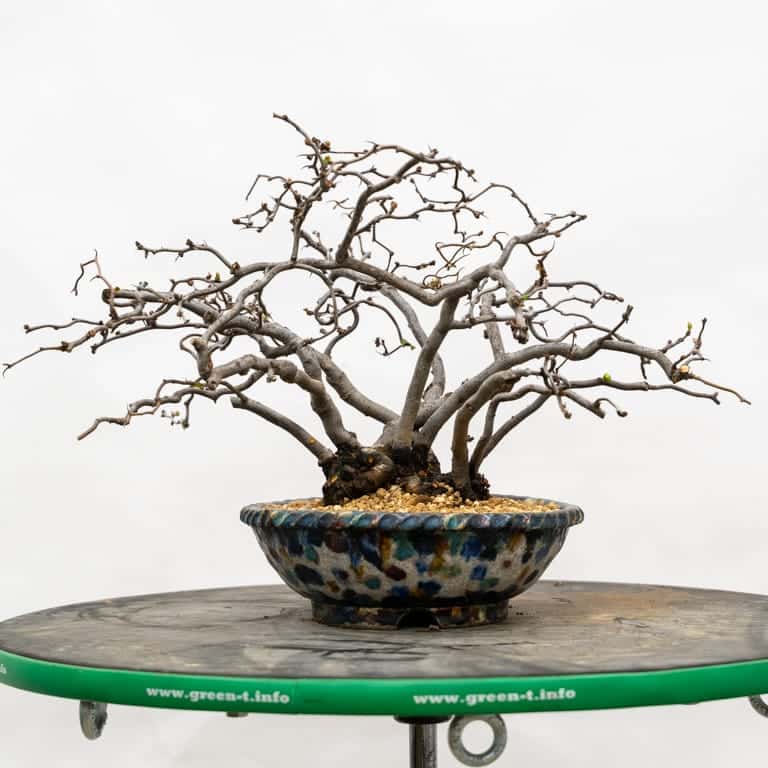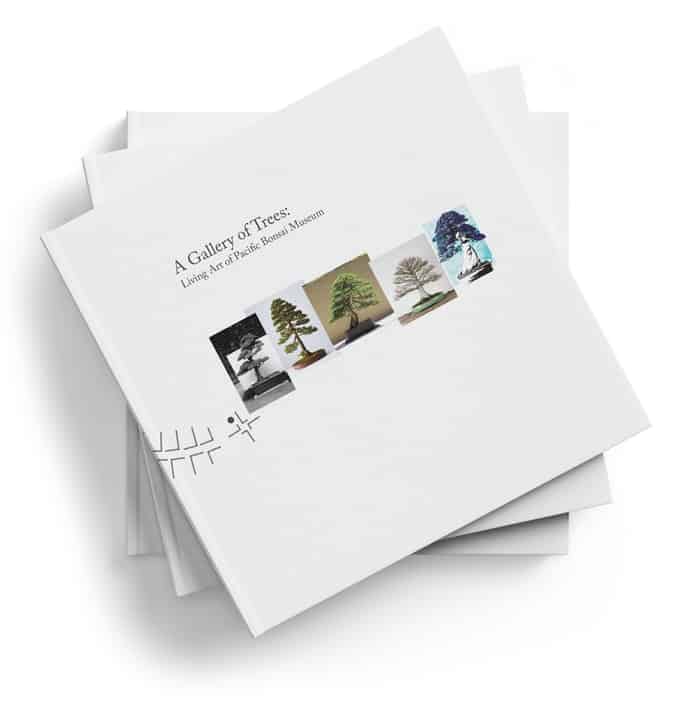Now that temperatures have cooled a bit, I’ve started repotting. Sometimes I return trees to the pots they were growing in, and other times I select new containers.
Here are eight options I considered for a contorted flowering quince. Do you have a favorite?

Pot #1 – round Yamaaki

Pot #2 – unglazed Japanese

Pot #3 – Jan Rentenaar

Pot #4 – round Japanese

Pot #5 – Vicki Chamberlain

Pot #6 – Vicki Chamberlain

Pot #7 – Bunzan

Pot #8 – Bunzan
Clump style bonsai like this contorted quince can look good in a variety of containers. Glazed choices are more common than unglazed for flowering trees (the flowers are pale orange) and I wanted to go with something glazed to provide color to the garden and to potential displays.
I limited my choices to relatively round containers as the square and rectangular pots I have strike me as too formal for the tree, and oval containers make more sense when there is an obvious main tree or an established front. As I’m just beginning to work with this tree, it’s nice to use a pot that looks good from all angles.
As for the specific choices, I found Pot #1 has a good shape for the tree but is a bit large and lacks color. A glazed version of pot #2 might work, but it too was on the large side.
The Rentenaar container, pot #3, could work, but the mound needed to cover the roots would have been fairly large making the lower part of the composition take up too much visual mass. A smaller version could work, but then the question of how to complement a deciduous container in slab or stone-like container comes up. Any suggestions?
I find pot #4 acceptable, but it lacks character and the lip is a bit wide for the tree. I liked both of Vicki Chamberlain’s containers for the tree, #5 and #6, but again, each was slightly larger than what I was looking for.
The final options were from Bunzan. I prefer pot #8 overall, but liked that #7 was shallower and lighter in color.

Contorted quince in a Bunzan pot – 11″
After seeing the tree throughout the year I’ll likely have new ideas about which container suits the tree best. And in one or two years, I’ll plan to make another switch.
One Week left in Kickstarter Campaign for Pacific Bonsai Museum Book
The Pacific Bonsai Museum has reached 77% of their goal to produce a book featuring the stories of thirty trees from their collection.
I’m excited about the project because there aren’t many books that show long-term bonsai development. Although before and after transformations can be exciting, bonsai take on their best characteristics over time. This book promises to offer a glimpse at this process with explanations from the curators.
To order a copy or learn more about the project, visit A Gallery of Trees: Living Art of Pacific Bonsai Museum on Kickstarter.

Subscribe to Bonsai Tonight
New Posts Delivered Every Tuesday and Friday
Carlos says
Hi Jonas! Do you repot all trees in winter or only quinces? Why is this?
Thanks in advance!
Carlos
Jonas Dupuich says
Hi Carlos! Some of my deciduous trees start growing in early January so December is a good time for me to repot them. Plum and quince are some of the first to start growing in my garden. Even some of my pines are producing new roots now so I plan to do a lot of repotting from now through February.
Edward Stanton says
Jonas, Another beautiful post in your “choose-a-pot” series. (Have you thought of putting them all together in a book?) My question has more to do with the tree than the pot. I have what I believe is a Contorted Quince from Warren Hill’s garden, which I leave outside in temperatures above 28F. It’s still green and has not lost many leaves here in zone 6, where we’ve already had several freezes. So I’m curious to know why your Contorted Quince has lost all of its foliage in a much warmer climate: did you defoliate? And if so, why? Thanks, grateful for your good work!
Jonas Dupuich says
Great question (and suggestion) Ed! I’d love to collect several years worth of these posts – will be sure to do a few more this year.
What I’m finding with deciduous trees is that the health of the foliage in fall is a result of how old the leaves are and how healthy the tree is. Deciduous trees that I’ve defoliated still look great and those that have their leaves from spring (Jan/Feb) are mostly yellow or brown. Health is the other big factor. This quince grew in the shade for most of the year and the leaves weren’t as hardy as they might otherwise be, plus the soil wasn’t great. I thought now would be a great time to repot so the roots could get started as soon as possible in new soil. Will be curious to see how the tree does this spring.
Lars Grimm says
I like pot 5 but maybe I would plant it a little higher in the pot so the ‘nebari’ would look more in sync with the depth of the pot.
Jonas Dupuich says
Thanks Lars – I think that would be a great way to go with #5.
eric morlet says
hi jonas ,
Is the flowers white or red ?
if white , your choice Bunzan is good . too colored for me but whynot!!
if red , i prefer Chamberlain’s pot (but smaler of course) .
thanks for your very interesting newsletter
Jonas Dupuich says
Thanks Eric! The flowers are pale orange. Were they red the Chamberlain options would provide great contrast with the flowers.
Carol says
4
Charlie Mosse says
I like Lars’ choice of the Vicki Chamberlain pot but, if it were a bit smaller like the Bunzan pots.
I too hope you can create a pot selection book. These posts are very helpful and easy to follow.
Jonas Dupuich says
Thanks, Charlie! Will keep the camera at the ready.
Stefanos Papavasileiou says
Hi Jonas,
Probably will not help you much…but the simple No 5, only because I am a Greek : ). This colour in combination with white are the colors that dominate in most houses in Agean sea.